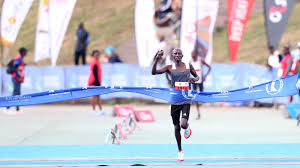A 25-year-old scientist has shattered the glass ceiling for young women in scientific research after she was ranked the best during a global conference in Kenya.
The conference, which was hosted at the coastal city of Mombasa, reviewed existing control measures and looked into adopting new innovative ways and policies that will help eradicate tsetse flies and Trypanosomiasis, also known as sleeping sickness.
Julia Wanjira Muita’s research poster was ranked number one, in a conference attended by eminent scientists from across the world.
Wanjira, a Masters Student at Jomo Kenyatta of Agriculture and Technology (JKUAT), basked in glory during the conference, attended by top scientists and officials of global institutions like the African Union and Food and Agricultural Organization (FAO).
Also present were participants from the World Health Organization (WHO) and the International Atomic Energy Agency (IAEA) and Kenya’s Ministry of Agriculture, Livestock, Fisheries and Co-operatives.
“The journey has just begun,” an elated Wanjira said, moments after her research poster was ranked position one, among tens of others.
While it is her win, she said this too was a win for all young girls seeking to venture into the often male-dominated world of science.
“I am happy. This is the first step in this scientific field,” Wanjira said.
Her study sought to answer the complex question of why trypanosomiasis, commonly known as sleeping sickness in humans and nagana in animals, is becoming prevalent beyond traditionally defined geographical boundaries.
She traversed through various counties across Kenya, seeking an answer to this scientific ‘mystery’.
Wanjira collected samples in Gatundu within Kiambu, Kajiado, Meru, Marsabit and Kwale Counties for analysis.
“We picked the samples, went to the laboratory and did the molecular screening…,” she said of the detailed process.
The outcome of her scientific poster was that a biting fly identified as stomoxys was behind the cases, unraveling the mystery that is likely to save farmers from the pain of losing their animals to trypanosomiasis.
“Stomoxys are cosmopolitan flies and are considered the most economically important mechanical vectors,” she explained.
“However, little is known about their vector competence in trypanosomes transmission.”
The challenge now is on farmers, she said, to be able to identify the biting fly, “which is found almost everywhere there is a cow and eradicate it. And mostly, they’re neglected. It transmits trypanosomiasis.”
Wanjira is pursuing Masters in Molecular Biology and Bioinformatics and was doing her project at the International Centre for Insects, Physiology and Ecology (ICIPE).
Others who ranked well include 42-year-old Isaiah Ndaburu Kiteto and Learnmore Nyakupinda, from Zimbabwe.
Nyakupinda,38, is a Glossinologist in the Department of Tsetse Control in Zimbabwe. His scientific poster was ranked second, followed by that of Kiteto.
Kiteto, is the current Director for Surveillance and Control, working at Kenya Tsetse and Trypanosomiasis Eradication Council.
Kiteto’s poster focussed on the distribution of tsetse flies in the Masai Mara ecosystem in Kenya.
“This study was to advise on the control measures that were to be put into place; because if you know that tsetse flies are concentrated in a certain area, then you could concentrate the control activities in that area,” he said.
“Basically it is to guide the control interventions that are to be put in place.”
Nyakupinda’s research poster revolved around data management in the war against tsetse flies.
“You need to have a strategy while dealing with this vector. You need to clear an area and ensure it is free. Data management also helps you to easily identify (where the tsetse flies are found),” he said.
Experts speaking during the conference said the entry of young scientists into the field was a good thing for the future of the African continent.
Kenya’s Deputy President Rigathi Gachagua challenged the scientists to focus on developing “African solutions for African problems.”
The Deputy President spoke earlier this week when he opened the five-day conference.
The conference, which ended on Friday, brought together stakeholders from over 38 tsetse-infested African Union (AU) Member States, encompassing disease control workers, scientists, researchers, and key representatives.
The relentless fight against the disease is driven by the International Scientific Council for Trypanosomiasis Research and Control (ISCTRC), a vital arm of the African Union Commission.
According to the African Union-InterAfrican Bureau for Animal Resources (AU-IBAR), Trypanosomiasis occurs over 10 million sq km in 38 countries. About 2,804 human cases were reported in 2015.
About 50 million cattle are at risk with 35 million trypanocide doses used and 3 million deaths of cattle reported annually. Agricultural production loss due to trypanosomiasis is estimated at US$ 5 billion per year.
Trypanosomiasis claims 50,000 lives annually, within Africa and covers over 10 million square kilometers in 38 countries, with 1000 human cases reported in 2022.
African Union InterAfrican Bureau for Animal Resources (AU-IBAR) Director Dr. Huyam Salih on Monday said there was a chance to eliminate tsetse and the disease in the continent, by working together.
“Trypanosomiasis remains a formidable obstacle to sustainable agriculture, rural development and public health in numerous countries in Africa,” the AU-IBAR director said.
























































